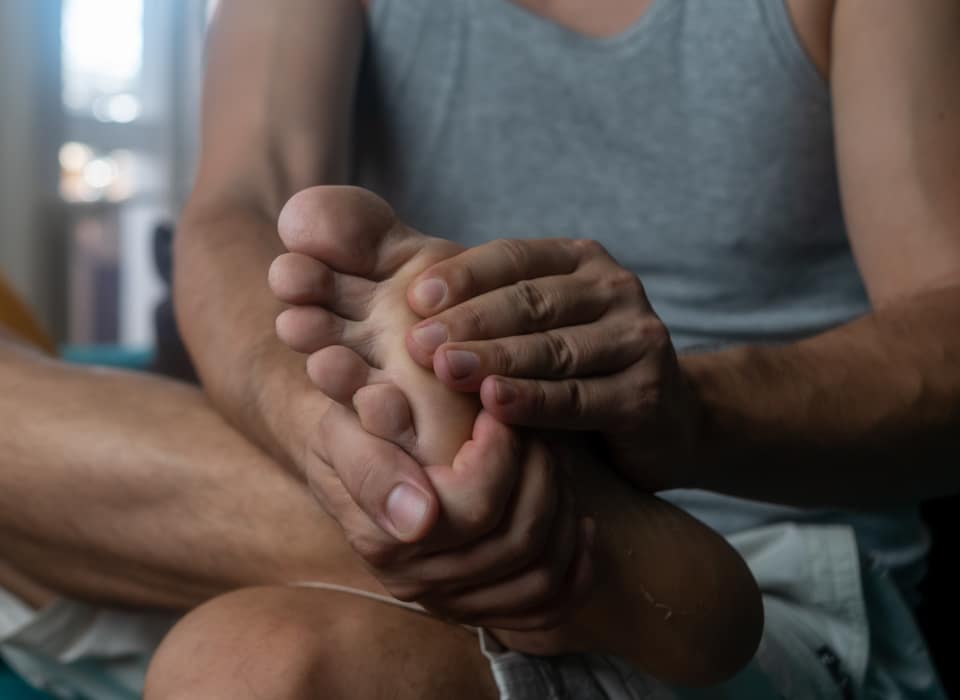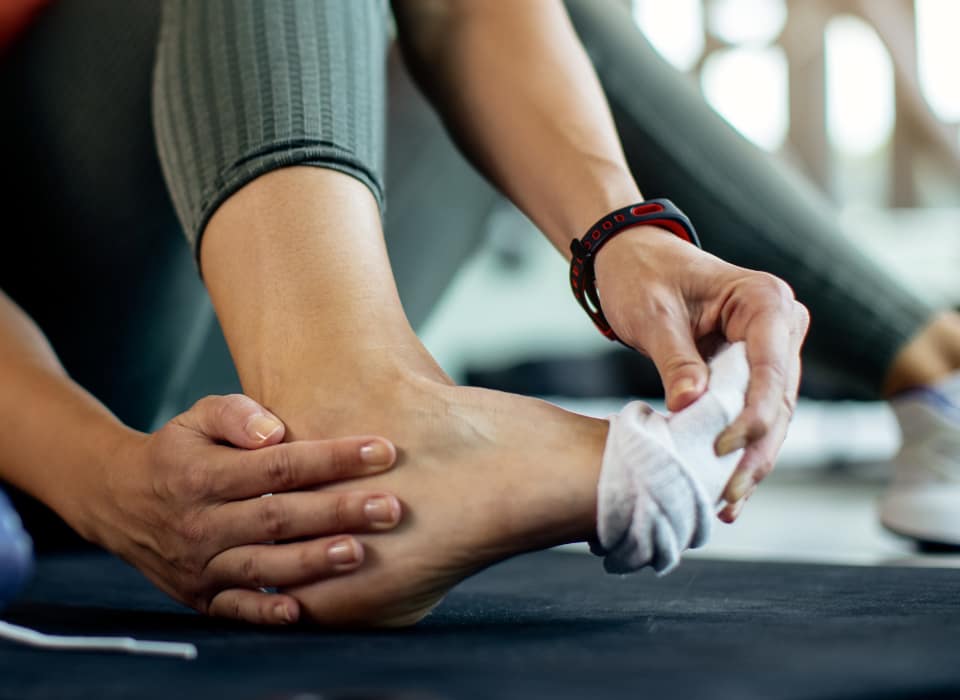Tendon problems
What are tendons?
Your foot and ankles are made up of bones, joints, muscles, ligaments and tendons. When the latter become injured or torn, your foot and ankle may become weak or painful, making it difficult to stand, walk or play sports.

Common tendon problems
Understanding the various tendon issues affecting feet or ankles
Here are some of the most common tendon issues that can occur, along with their symptoms and possible complications:
Tendonitis or inflammation of a tendon: Tendonitis can happen when tendons are overused or get injured, often during physical activity. Tendonitis can also occur with ageing as the tendons lose elasticity. Common symptoms include pain, swelling, stiffness, tenderness, weakness, limited range of motion, redness and warmth to the touch.
Tendon tears: Sudden trauma or chronic wear and tear may cause your tendons to tear. Partial or complete tears can significantly impact your mobility and therefore require prompt treatment to prevent further damage.
Tibialis posterior tendinopathy: Injuries or overuse of the tibialis posterior tendon can lead to a condition known as tibialis posterior tendinopathy or tibialis posterior dysfunction. Common symptoms include pain, swelling, and progressive flatfoot deformity, affecting the foot’s ability to function correctly and leading to difficulty in walking. Treatment is crucial to preserve foot function and prevent further complications.
Tibialis anterior tendinopathy: Problems with the tibialis anterior tendon can lead to a condition known as tibialis anterior tendinopathy or tibialis anterior dysfunction. You may feel pain in the front of the ankle and have difficulty lifting your foot, which can affect walking and other activities that require proper foot movement and support.
Peroneal tendinopathy: Peroneal tendons run along the outer ankle, helping to stabilise and move the foot. Inflammation or tears in these tendons can cause lateral ankle pain, swelling and instability.
Achilles tendinopathy: The Achilles tendon, the largest tendon in the body, connects the calf muscles to the heel bone. Achilles tendinopathy occurs when this tendon becomes irritated or damaged, leading to pain and limited mobility. This can occur in the body of the tendon (called non-insertional tendo achilles tendinitis) or at the insertion of the tendon into the calcaneus (heel bone). This is called insertional tendo achilles tendinitis.
Treatment for tendon problems
How are tendon problems treated?
First-line treatments are non-surgical and may include:
Rest and immobilisation: Initially, it’s best to rest and immobilise the affected foot or ankle to avoid making the problem worse.
Physiotherapy: Exercises to strengthen the surrounding muscles and improve flexibility, reducing stress on the affected tendons.
Orthotic devices: Custom orthotics can provide support and optimise foot and ankle alignment.
Medications: Anti-inflammatory drugs can alleviate pain and reduce inflammation.
Cortisone injections: Used judiciously, injections can settle the inflammation of the tendon and lead to recovery.
Tendon surgery Perth
What is tendon surgery?
When non-surgical treatments do not suffice or when tendon damage is severe, surgery may be recommended.
There are 4 types of surgeries for tendon issues in the foot and ankle.
Tenosynovectomy
Tendon repair
This type of surgery is performed to address acute tears or injuries to a tendon. During surgery, we will make a small incision above the damaged tendon and remove damaged tissues. In some cases, we will use a graft (a tendon from another part of the body) to strengthen and repair the torn or weakened tendon.
Tendon reconstruction
This type of surgery is typically performed when you have a complex or severe tendon injury. It involves reconstructing the damaged or degenerated tendon, using advanced techniques. For example, we may use grafts, implants, or other innovative approaches to improve the structural integrity and functionality of the tendon.
Tendon transfer
During a tendon transfer, we will ‘relocate’ tendons from one part of the foot or ankle to another. It’s done to improve the overall function and stability. In cases of foot deformities, tendon transfer can help pull the toe into a straight position, improving the alignment and function of the foot.
After tendon surgery, you may need to wear special shoes or braces to support the healing process and protect the repaired tendons. We will give you instructions and it’s important to follow these instructions carefully as they are essential for optimal recovery. Physiotherapy is also a vital component following tendon surgery.
Foot specialist Perth
Why The Foot & Ankle Centre?
With over 25 years of specialised expertise in foot and ankle surgeries, The Foot & Ankle Centre is your trusted clinic for tendon issues.
You are welcome to make an appointment at The Foot & Ankle Centre. We try to see patients as quickly as possible.



